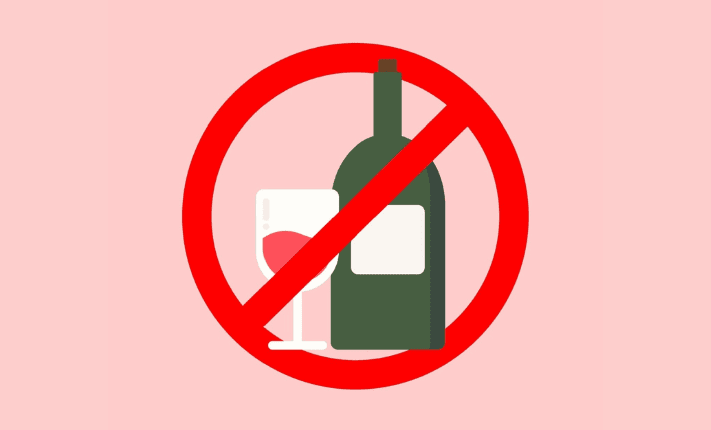Effects of alcohol policies on reducing alcoholic beverage consumption: Agency for Research on Cancer (IARC) to review and assess all available evidence on the effectiveness of selected alcohol policies in reducing consumption of alcoholic beverages at the population level.
Although alcoholic beverages were classified as carcinogenic to humans (Group 1) several decades ago, no such evaluations had been performed so far.
A Special Report published today in The New England Journal of Medicine summarizes the studies reviewed and presents the conclusions of the Working Group. The detailed assessments will be published as Volume 20B of the IARC Handbooks of Cancer Prevention.
“This volume of the IARC Handbooks provides evidence-based evaluations on the effectiveness of selected population-level interventions in reducing alcohol consumption, and it aims to help policy-makers in implementing alcohol control measures,” says Dr Béatrice Lauby-Secretan, Deputy Head of the Evidence Synthesis and Classification Branch at IARC and a co-author of the report. “Reducing alcohol consumption reduces the risk not only of cancer but also of many other health conditions. These results provide evidence in support of the World Health Organization Global Strategy to Reduce the Harmful Use of Alcohol, which describes a set of alcohol policy interventions to support national actions.”
IARC Handbooks of Cancer Prevention Volume 20B is the second volume on the evaluation of primary prevention of alcohol-related cancers. Volume 20A assessed the reduction or cessation of alcoholic beverage consumption in relation to cancer risk.
Results
The Working Group evaluated all studies assessing the effectiveness of interventions in relation to tax and price, availability restrictions, and marketing bans, as well as coordinated multiple alcohol policy interventions.
The Working Group concluded that the following alcohol policy interventions lead to a reduction in alcohol consumption:
- interventions that increase taxes, minimum prices, or minimum alcohol purchase or drinking age;
- interventions that reduce alcohol outlet density, or days or hours of sale;
- strong bans on alcohol marketing;
- total bans on alcohol sales;
- government monopolies or other coordinated multiple alcohol policy interventions
- Tax and price policies:
- The Working Group concluded that there is sufficient evidence that increases in alcohol taxes that increase prices lead to a reduction in alcoholic beverage consumption.
- The Working Group concluded that there is sufficient evidence that minimum pricing leads to a reduction in alcoholic beverage consumption.
- The Working Group concluded that there is inadequate evidence that bans on discounts of alcoholic beverages lead to a reduction in alcoholic beverage consumption.
Availability policies:
- The Working Group concluded that there is sufficient evidence that restrictions on density of alcohol outlets lead to a reduction in alcoholic beverage consumption.
- The Working Group concluded that there is sufficient evidence that restrictions on days or hours of sale lead to a reduction in alcoholic beverage consumption.
- The Working Group concluded that there is sufficient evidence that increases in the minimum legal alcohol purchase or drinking age lead to a reduction in alcoholic beverage consumption.
- The Working Group concluded that there is sufficient evidence that bans on alcohol sales lead to a reduction in alcoholic beverage consumption.
Marketing bans:
The Working Group concluded that there is sufficient evidence that strong bans on alcohol marketing lead to a reduction in alcoholic beverage consumption.
Coordinated multiple alcohol policy interventions:
These are defined here as government alcohol monopolies or a set of interventions enacted and implemented as part of a national action plan to reduce alcohol-related harm.
The Working Group concluded that there is sufficient evidence that government monopolies or other coordinated multiple alcohol policy interventions lead to a reduction in alcoholic beverage consumption.
Methodology
The evaluations were performed according to the principles and procedures described in the IARC Handbooks of Cancer Prevention Preamble for Primary Prevention.
Only published studies with empirical data on selected alcohol policy interventions in relation to change (increase or decrease) in alcohol consumption – defined as the sum of at least the major alcoholic beverage types (i.e. beer, wine, and spirits) or each of those three types separately – were included.
The IARC Handbooks of Cancer Prevention provide evaluations of the cancer-preventive potential of strategies and interventions. Each volume is produced by an international Working Group of experts.
The series was relaunched in 2014 with a reassessment of breast cancer screening. The IARC Handbooks use a classification system based on strict and transparent criteria. For reference, see the two evaluation schemes: https://www.iarc.who.int/infographics/iarc-handbooks-evaluations-of-primaryprevention/ and https://www.iarc.who.int/infographics/iarc-handbooks-evaluations-of-secondary-prevention/.
For more on the IARC Handbooks, see https://handbooks.iarc.who.int/
The International Agency for Research on Cancer (IARC) is part of the World Health Organization. Its mission is to coordinate and conduct research on the causes of human cancer, the mechanisms of carcinogenesis, and to develop scientific strategies for cancer control. The Agency is involved in both epidemiological and laboratory research and disseminates scientific information through publications, meetings, courses, and fellowships.
- One in three parents lack support to keep their children healthy - 20th November 2025
- Men under more pressure than ever - 20th November 2025
- Disabled children excluded from sports - 20th November 2025







